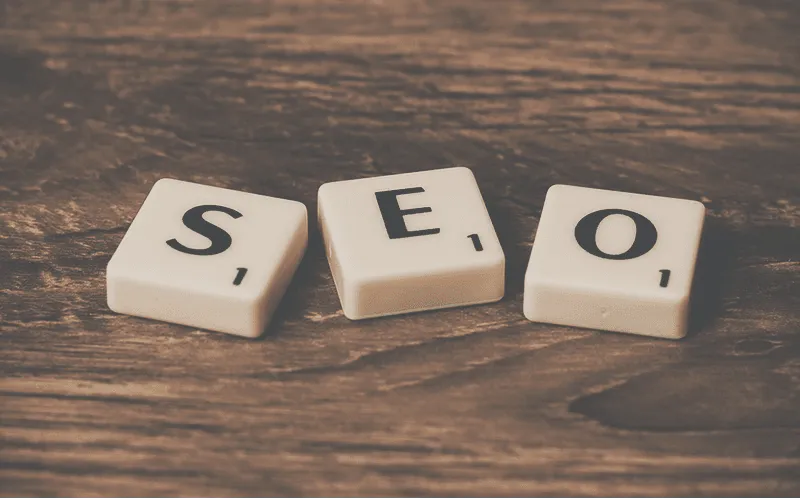How to master the power of App Store Optimization
Updated 13 Apr 2023
10 Min
4250 Views
At last, you have your long-awaited app done. What's next? Obviously, you haste to upload it to the app store in order to let it work for you and bring you profit. No matter whether you have a budget or not, you have to undertake a marketing activity. It happens that unexpectedly, the promising app marketing plan yet doesn't work out. What's wrong? It is about time to figure it out and stop neglecting some meaningful factors.
App stores are vast pools of more than 3.1m apps for a total:
- 1.5m in Apple App Store
- 1.6m - in Google Play Store
- 340ths in Windows Phone Store
This number is growing by 1000+ apps a day. Thus, the apparent question arises: How many apps do people actually use? A usual smartphone owner has about 30 apps installed on his phone, and only 26% of them are used regularly so says the statistics. Sounds lousy, doesn't it? In such situation, relying on chance is misspend. So, this article is aimed to help your app succeed among tons of others.

The success of an app is possible to measure in various ways how many times it was downloaded and how many active users it has, regard the app rating and reviews, etc. Still, let's be straightforward, the most tangible indicator is payback, and then profitability of the entire business. Turning back to figures, the latest Statistics and Facts shows that worldwide revenue of the app stores in the period from 2008 to 2014 was $8.4bn. Bearing in mind that only around 30% of available apps are paid, that number seems significant. Therefore, you have a real chance to get yourself a piece of a pie.
App marketing specialists can suggest you a number of methods, both free and costly, how to gain your app visibility and use. Here is the one among effective ones, known as App Store Optimization (or simply, ASO).
See also: How to use mobile app personalization tools and optimize your application functioning
What is ASO?
ASO, or App Store Optimization, is actually the process of improving the characteristics of your app to get found on the app store. We normally have certain things that the person in charge of an app has control over, for instance, title, description, screenshots, keywords, localisation and so on.
Here is a basic ASO checklist to keep in mind:
- Title
- Keywords
- App description
- Screenshots
- App Icon
- Rating
- Reviews
- App store additives.
In addition to all above, the smooth ASO process depends upon an in-depth understanding of your intended customers and the language they are using looking for similar apps that is the key to a rewarding app marketing plan.

Why do you need ASO?
Looking back at Google I/O 2015, we recall Ankit Jain's words: 'For the average app, search actually makes up the vast majority of installs.' Reliable sources claim that over 60% of app discoveries come from search engines and app store search (27% and 40% respectively).
If you neglect to optimize your app for search, rest assured, you don't cover a significant niche of potential users.
Any app can experience one of two possible lifecycles. First, when your app appears in the market and the promotion campaign you've chosen works, it experiences an initial sharp rise. Over the time, it declines due to various reasons. It is one possible scenario.
Another one shows the possibility to save the average number of downloads through the app existence. Isn't it true that the second scenario is a more preferred option? Ability to retain users comes with enormous effort, but ASO is a base of the daily downloads and can simplify this process.
See also: How much does it cost to create an app?

App Store Optimization tips
App store optimization is not a plain process, it is a set of action aimed to impact your app ranking in the search. On your product page in the app store everything matters, there are no minor details. So, let's dive into the factors of influence and identify some of the common mistakes usually made by newcomers.
Requirements for the app product page just slightly differ in the various mobile app stores and can be found in app store optimization guides. Still the basics of Apple App Store optimization and Google Play Store optimization are alike.
Keywords optimization
We are going to start app optimization by making a semantic core. Yes, I mean it, the same principle of SEO optimization comes to the first place here. Selection of relevant app keywords that your intended audience uses is a crucial phase, as keywords are necessary for when you fill in data in the product page, and also, they will be useful in the title and description.
When you fill up the keyword pool, three things do matter:
- Relevance certain words tend to deliver more traffic, but what's the point of them if they have nothing to do with your app.
- Difficulty each app has it's natural limit. Try your best to figure it out!
- Traffic keywords still should remain true to their initial purpose.
Tips:
- Avoid keywords repetition (even if you've changed singular to plural).
- Don't use the word 'app' or the name of the category. Save precious characters to meaningful keywords.
- Trying to manipulate ranking with the help of irrelevant keywords may lead to app store rejection.

Title optimization
The title is the heaviest weight on the ranking algorithm. Choosing the title of an app may provoke a number of disputes as too many things should be considered: the title is supposed to be catchy, simple and memorable. Besides, it's a good idea to include keywords into the title it will significantly increase the search traffic.
Tips:
- Be careful using non-existent words.
- Apple App Store recommends not to exceed 23 characters while Google Play Market has 30 characters limit.
Description optimization
Unnecessary to mention that description has to be, first of all, engaging and appealing to your app's potential users. You should also remember that the first sentence of the description is the most influential since users are able to read it without the need to tap 'more'. Make it most informative. Normally, the description concentrates on the most vital app features and, combined with the sufficient number of keywords, it makes your app discovered.
Tips:
- Do not overload the description (and the first sentence in particular) with keywords. Such abuse may create a negative impression of your and even end up with it's rejection.
- Also, avoid mentioning any pricing in your description, it is already shown on the product page.
- Various rewards, quotations from some publications and positive feedbacks can be included. That works.
- Try your best to pick a good ASO title at once.
- Make the description for people, not for machines.
The title of the application and it's description can surely be changed in app stores. However, it shouldn't be done too often for the purpose of ASO, especially the title. Just imagine, you have a certain number of downloads, usage rate, it's been rated and reviewed and suddenly you change the title thinking it will attract more customers. Once it may be tolerated, but if you keep changing to prove all your hypothesis, you'll start to lose users and it seems to be impossible for the remain to spread info of your app. So, pick a fine ASO title and stick to it!

Icon and Screenshots optimization
Who said that text is more important than images? If you are among those think so, let me try to convince you otherwise.
Whenever the user inputs the query to the searching box of any app store, the app icon is the first thing that attracts attention. An average user notices how original and good-looking the icon is, there is no escaping that. Therefore, by creating a catchy icon, you provide the user with additional stimulus to open your app product page and download your app. Worth spending some time on designing the icon, isn't it?
Getting to the app product page, hardly every user will trouble himself reading your description. But face it, few would refuse to view screenshots. Here is your chance to make an inquisitive user download and install your application. How to create best-quality screenshots? First of all, underline 4-5 key benefits that your app offers and create your screenshots basing on this benefits. Don't forget to add the description to your app screenshots.
The first screenshot is the most important of all. (Remember the first sentence in app description? The same story.) So, make sure that the first screenshot is the most descriptive, it can illustrate the main app feature or the gameplay. Showing menu screen or splash screen first doesn't seem to be the best idea.
Tips:
- Don't add text on the icon. It's too much.
- Make the icon consistent with the design of your app.
- Localize screenshots and adapt them to the device. It is a must.
- Create strong visual impression.

Well-written description and great screenshots are a winning combination in terms of ASO. Application video preview is also welcome.
App store ranking basics
The app store ranking is determined by a complex algorithm flavored with a 'secret sauce', but some influencing factors are visible.
- A common belief that downloads are important is not entirely true. The matter is that the velocity of downloads is even more meaningful for your app rating. Velocity means the number of downloads during a certain term. For instance, getting 1,000 downloads in one day is better than the same amount, let's say, in 7 days.
- Getting oodles of reviews influences your app ranking, but having 1-2 star reviews may reduce your app ranking position. On the contrary, 5 and 4-star review will drive your app higher.
- Another thing that is counted is called user retention. This indicator contributes into the ranking estimating the number of refusals: whether users keep your app on their mobile devices or immediately after installation delete it.
Top differences between Apple App Store and Google Play Store
How many mobile app stores are in the vast reaches of the Internet? Oodles. Surely two major app stores Apple App Store and Google Play, dominate the whole market. All the other try to grab at least a tiny share of this extremely profitable market.
Though the main parts of the ASO process are the same, some differences take place. At the first sight, Google Play seems to have a more complex searching algorithm that is combined with various external factors. iOS App Store product pages need to be thoroughly created in terms of SEO since Google web search indexes and ranks them as any other web page.

Moreover, categorisation in Apple App Store and Google Play differ significantly. Apple lets publish the same app in three different categories while Google assigns one category for one app. Another great difference is the possibility of users to +1 in Google Play. That mean the ability to show your positive impressions of an app with one tap. This feature it's influence on app ranking position.
All in all, you shouldn't forget that ASO is more like a marathon, not a sprint. It never comes to the end. After you got everything discussed above ready, it's time to analyze and explore the indicators of your app performance. Make all the necessary changes - try, make mistakes and try again.

Evgeniy Altynpara is a CTO and member of the Forbes Councils’ community of tech professionals. He is an expert in software development and technological entrepreneurship and has 10+years of experience in digital transformation consulting in Healthcare, FinTech, Supply Chain and Logistics
Give us your impressions about this article
Give us your impressions about this article